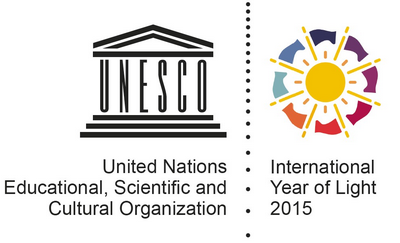Light in Life
Through photosynthesis, light is at the origin of all life. Photonic technologies provide new tools for doctors and surgeons, new developments in optometry and vision science improve quality of life, and light-based technologies are used every day in medical diagnostics in ways that we are often unaware of. This page will contain links to resources that will allow you to understand how light science and light technologies impact on medicine, vision and life sciences in general.
MEDICINE
.2014-07-21-14-47-44.jpg)
- Zoom
- Image courtesy Freddy Espinoza
Breakthroughs in light technology continue to revolutionize the medical industry. Medical imaging, surgical procedures, and even diagnoses rely upon the use of light.
Medical imaging is the process of creating visual representations of the interior of a body for further medical analysis. Such imaging is generally used in medical fields such as neuroscience, cardiology, psychiatry, and psychology, amongst others. Common applications include CT (computed tomography) scans, MRIs (magnetic resonance imaging), ultrasounds, and X-rays (a form of radiography).
- Zoom
- Image courtesy Carmen Kut
With the invention of the laser just over 50 years ago, the role of light in medical procedures has grown immensely. Lasers are especially crucial in dermatology (skin), ophthalmology (eyes), and dentistry due to their precision and high power density. In fact, lasers are now widely used for common procedures such as tumor, tattoo, hair, and birthmark removal. Eye surgery and other surgical procedures now also use the power of lasers rather than invasive methods of the past.
More recently, light applications - specifically lasers - have been used in medical diagnosis due to their non-invasive properties. Routine diagnostics such as tissue oxygenation, early detection of tumors by fluorescence, and early detection of dental cavities are all performed by laser-based medical apparatus.
LIFE SCIENCES

- Zoom
- Image courtesy Freddy Espinoza
Light is crucial in exploring the fundamentals of life and our surrounding environment. The overarching fields of physical and natural sciences rely on photonics technology to explore and better understand our world.
Physical science includes physics, astronomy, chemistry, and earth science, and has led to our understanding of far-reaching concepts such as matter, gravity, origins of the Universe, molecular structure, and meteorology. Natural sciences, on the other hand, explore nature’s phenomena and how the Universe works. Branches of natural science include biology, chemistry, physics, astronomy, and earth sciences. Biology especially depends on light sciences to further research concepts such as molecular biology.
Across the board, instruments developed through light technology are used frequently in life sciences. Found both in both research labs and classrooms, microscopes are used for viewing objects too small to be seen by the naked eye. On the other end of the spectrum, telescopes are instruments that help us to see distant objects in space in order to view and understand the Universe. Technology such as high resolution cameras, laser microdissection, and molecular probe development all aid in the understanding of our natural environment.
VISION
It is said that the eyes are the windows to the soul; however, it is optics and photonics that play a major role in studying the eye. Optics and vision go together and optical and photonics technologies are used to examine, correct, and test normal and abnormal vision. These include the whole gamut from simple eyeglasses all the way to laser correction, photodynamic therapies, low vision aids and retinal implants to enable the blind to see. Optics and photonics has enabled the development of sophisticated devices such as optical coherence tomography, photorefraction, LASIK techniques, etc.
There is also a great need for mobile technologies – that is using inexpensive smartphone technologies and building inexpensive, lightweight optics/photonics based attachments to detect air pollution levels, malaria in blood cells, allergens in food, etc. In terms of vision it is possible to devise apps and add-on devices to detect /diagnose blinding diseases such as age related macular degeneration, refractive correction, and other abnormalities in the field, especially in developing countries and be able to perform telemedicine.
To learn more about how optics and photonics are shaping the way we live and see, view the following resources:

